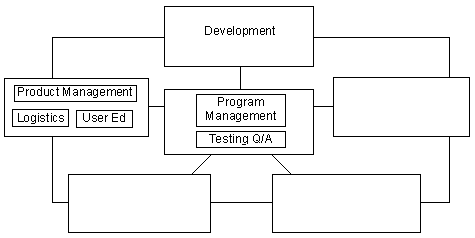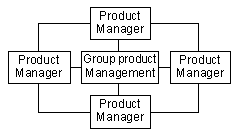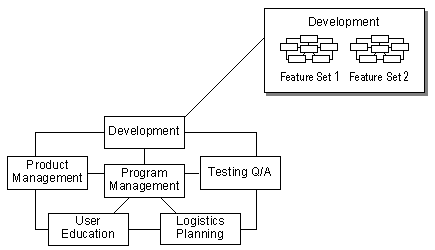
On any given enterprise project, the project roles in the Team model may differ somewhat. The six roles specified in this chapter describe the functions that must exist in a project team. However, this requirement does not imply that there must be at least six members on the project team.
Depending on the size of the project, your teams can be shared or grouped together as appropriate. For example, the following diagram shows how you might combine roles on a small project with a three-member team.
Example of sharing project roles

For a team on a large project with more than six members, the teams can be organized as a combination of functional teams and feature teams.
A functional team is led by a group manager and consists of team members who perform similar tasks and roles. Product Management and Logistics team members, for example, can be organized into functional teams because their responsibilities pertain to the integrated application as a whole, rather than specific aspects of the application.
Functional team members all fulfill a single function

A feature team, on the other hand, is usually led by a program manager and consists of team members who perform different tasks and roles. Feature teams typically consist of developers and testers and are organized according to product feature sets. Each feature team has its own functional specification and release schedule and performs with the same rigor as a team that is delivering a complete application.
Feature teams are complete "mini" project teams
